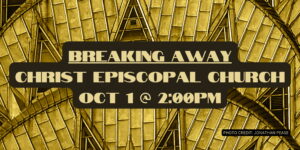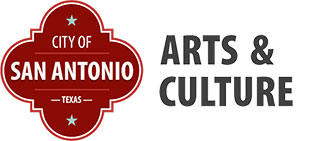Please Note: This event has expired.

The second of two concerts centered on the musically rich period between the World Wars features music that forges new paths in all directions
The second of two concerts centered on the musically rich period between the World Wars features music that forges new paths in all directions by Leoš Janáček, Germaine Tailleferre, and Ernest Bloch.
Leoš Janáček: Pohádka (Fairy Tale)
Germaine Tailleferre: String Quartet
Ernest Bloch: Piano Quintet No. 1, B.43
Matthew Zerweck & Laura Scalzo, violins; Emily Freudigman, viola; Ken Freudigman, cello; Viktor Valkov, piano
About the Music:
JANÁČEK: PODHÁDKA (“FAIRY TALE”)
In 1910, ... view more »
ADMISSION INFO
The second of two concerts centered on the musically rich period between the World Wars features music that forges new paths in all directions by Leoš Janáček, Germaine Tailleferre, and Ernest Bloch.
Leoš Janáček: Pohádka (Fairy Tale)
Germaine Tailleferre: String Quartet
Ernest Bloch: Piano Quintet No. 1, B.43
Matthew Zerweck & Laura Scalzo, violins; Emily Freudigman, viola; Ken Freudigman, cello; Viktor Valkov, piano
About the Music:
JANÁČEK: PODHÁDKA (“FAIRY TALE”)
In 1910, both Igor Stravinsky and Leoš Janáček (1854-1928) made musical settings of Russian folk tales. Stravinsky’s famous Firebird ballet for full orchestra was quite literal and became world famous. Janáček’s Fairy Tale, a more general setting for cello and piano, went relatively unnoticed. This statement is not to take away from the mastery and charm of Janáček’s music, but rather to contrast two opposing approaches to similar material. The full title of Janáček’s work was originally “The Tale of Czar Berendey.” When the composer revised the work in 1923, he shortened the title simply to Fairy Tale.
Briefly, the story goes that Czar Berendey is duped into ransoming the soul of his son, Ivan, to Kashchey, Ruler of the Underworld. When Ivan is old enough, his father tells him of his terrible fate, whereupon Ivan sets out, determined to free himself of the curse. Early in his odyssey, he sees a duckling turned into a beautiful maiden, and they instantly fall in love. She turns out to be Marya, the good daughter of Kashchey. In later episodes, Ivan (with Marya’s help) successfully accomplishes two tasks set for him by Kashchey, but Marya is changed into a flower. Ultimately, the couple are rejoined in a happy ending.
In the Fairy Tale, the cello part represents Ivan while the piano speaks for Marya. These symbols are immediately apparent in the first movement, as a fanfare-like cello pizzicato punctuates the gently curving main theme. A canon (imitation) between the instruments perhaps symbolizes the betrothal of the couple. Soon, however, this tender stroking turns into a gallop, possibly signifying Kashchey’s pursuit of the lovers.
Another piano-cello canonic dialogue opens the second movement, but this spiky theme is answered by a more lyrical variant. The fanfare motive from the first movement returns along with other music heard previously.
The most “Russian” sounding part of the Fairy Tale is the main theme of the final movement. One striking feature that occurs in every movement is a sort of “dissolution” at the end, rather than a solid recapitulation and conclusion. As biographer Jaroslav Vogel points out, this “. . . heightens the fairy-tale atmosphere, and the charm is enhanced by Janacek’s ability to enter completely into the spirit of the old Russian epic tales.”
TAILLEFERRE: STRING QUARTET
In 1917, World World War I was still raging throughout Europe, A group of six composers gathered frequently in Paris to discuss progressive aesthetic theory and practice. Included were Louis Durey, Arthur Honegger, Darius Milhaud, Georges Auric, Francis Poulenc, and Germaine Talleferre.
The progressive-minded Talleferre (1892-1983) was the only female member of Les Six, and here rebellious nature preceded her there. Born with the family name of Taillefesse, she changed it to Tailleferre to spite her father, who refused to support her musical studies. She took piano lessons with her mother, and began to compose short original pieces. These led to her studies at the Paris Conservatoire, where she met the young composers who, with her, would soon constitute Les Six. Her early relationship with them soon led to her association with the artistic crowds in the districts of Montmartre and Montparnasse. There the idea of Les Six was born, unified by their faith in writer Jean Cocteau’s published ideas.
During the 1920s, Tailleferre wrote many of her most important compositions, and she remained reasonably prolific throughout her long life. In addition to the concert hall, she composed several film scores, music or the radio and television, and incidental music for the theater. Her music for piano solo and concertos was especially profuse.
Talleferre composed her only string quartet during 1917-1919 at the height of her involvement with Les Six. She was a student of Milhaud at the time. The conciseness of each movement suggests that the work may have originated as a composition assignment or a competition entry.
The quartet opens with a movement marked Modéré. A short theme is passed around between instruments. Then another, led by the Second Violin receives similar treatment. Led by the First Violin a cascading idea now becomes the focus, and this leads to a short coda (or, wrapping up) of the first movement.
Marked Interméde, the second movement opens in a playful, puckish mood. By contrast, the central section is smooth and closely concentrated on two or three short musical ideas. A variant recap of the first section rounds out the intermediate movement.
A somewhat ferocious mood, marked Très ritmé greets us at the opening of the finale. Then, sudden quietness prevails while the players explore the lower regions of their instruments. This congeals into a surprising solo by the first violin. Shifting into a tremulous pattern, the opening music returns, now transformed in mood and texture. A brief transition leads to a recapitulation of the opening material, which soon dissolves into freer expression and a new section of the movement. Then, taking on a veneer of heroism (Un peu plus lent), the music slips slowly into a hushed ending.
BLOCH: PIANO QUINTET NO. 1
Ernest Bloch (1880-1959) was a composer of Swiss origin. His studies and early musical career centered in his native city, Geneva. In 1916, he traveled to the United States as the conductor of a Swiss dance company. When the company suddenly went bankrupt, Bloch was stranded without friends or financial resources. Within a short time, however, he had begun a new career here, at first teaching at the Mannes School of Music, then becoming Director of the Cleveland Institute and later the San Francisco Conservatory.
Most of the music Bloch composed during the 1920s could be termed “neoclassic” That is, music written in Classical Period forms, or music adhering to formal principles (such as balance and proportion) found in Classical Period composers, notably, Haydn, Mozart, and Beethoven. At the same time, Bloch’s own musical style became intensely personal, and consistently so. He completed his Piano Quintet No. 1in 1923.
Tension and drama inform the opening minutes of Bloch’s quintet. In part, this can be attributed to the contrast between the piano’s music and the music for strings. The piano then begins a new “bed” of sound for individual and pairs of strings to etch brief musical statements. This whole passage is a transition to a new theme group, again contrasting piano and strings. Melodies and accompaniments are freely exchanged between strings and piano. These textures are somewhat simplified as the music reaches the epitome of its development. The music becomes declamatory again (as in the opening music), finally tumbling to the conclusion of the movement.



